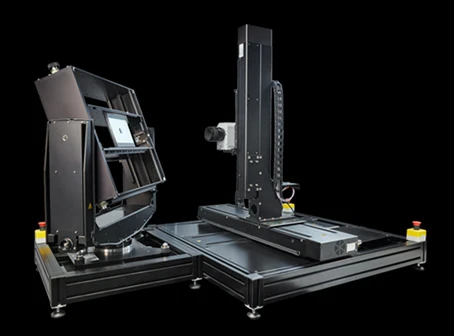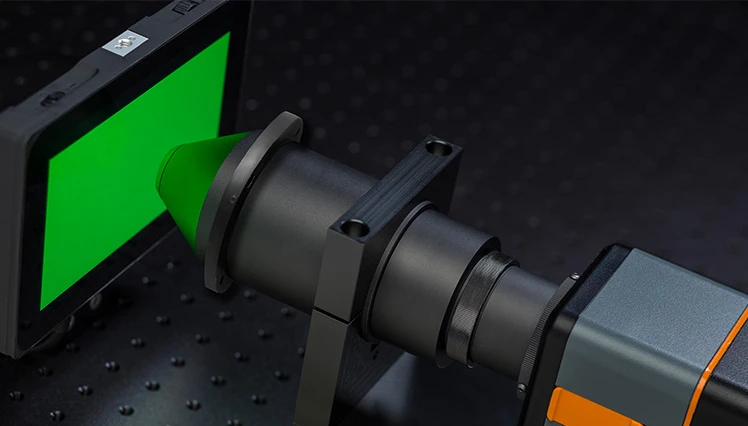วิธีที่รวดเร็วและแม่นยำในการวัดประสิทธิภาพมุมมองของจอแสดงผล
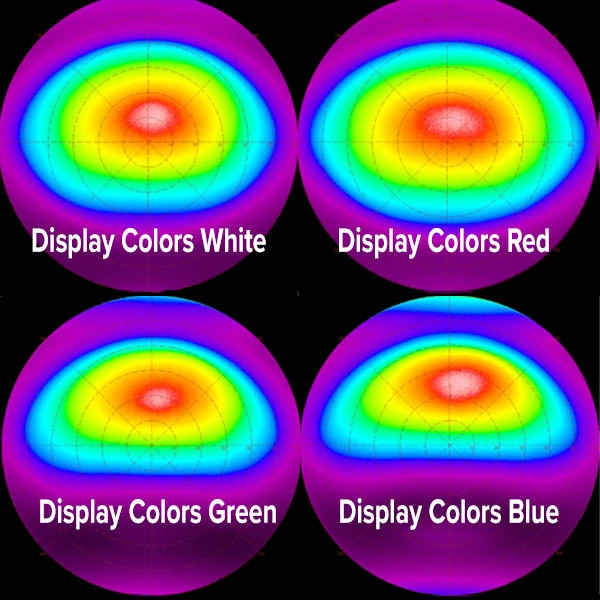
แม้ว่าจอแบน (FPD) จะมีลักษณะที่น่าสนใจหลายประการ แต่ก็มีข้อจำกัดบางประการ เช่น ลักษณะการปล่อยแสงเชิงมุม โดยเฉพาะจอแสดงผลคริสตัลเหลว (LCD) ลักษณะการแผ่รังสีเชิงมุมหรือที่เรียกกันทั่วไปว่าลักษณะการรับชม หมายถึงการเปลี่ยนแปลงของสี ความสว่าง และความเปรียบต่างที่เกิดขึ้นในทิศทางการรับชมที่แตกต่างกัน โดยบังเอิญ ความส่องสว่างและสีเป็นคุณลักษณะทางแสงที่สำคัญสองประการของ FPD ในกรณีของจอแสดงผลแบบคริสตัลเหลวในรูปแบบแอคทีฟแมทริกซ์ (AMLCD) การเปลี่ยนแปลงเหล่านี้มักเกิดจากการจัดเรียงร่วมกันของผลึกเหลวและสถาปัตยกรรมเทคโนโลยีที่เกี่ยวข้องกับการสร้างจอแสดงผลดังกล่าว
การทำความเข้าใจค่าความสว่าง วิธีการวัดค่าสีและความส่องสว่างอัตราส่วนความชัดคือพารามิเตอร์สามตัวที่ใช้ในการประเมินประสิทธิภาพของมุมมองของจอแสดงผล วิธีการทั่วไปที่ใช้ในการวัดพารามิเตอร์เหล่านี้เรียกว่าวิธีโกนิโอเมตริก ด้วยวิธีโกนิโอเมตริก โพรบหรือเครื่องวัดความสว่างเฉพาะจุด–สเปกโตรเรดิโอมิเตอร์อยู่ในตำแหน่งมุมที่แตกต่างกันโดยคำนึงถึงจอแสดงผล แม้ว่ารูปแบบการทดสอบและการวิเคราะห์ข้อมูลจะขึ้นอยู่กับหน่วยเมตริกที่ต้องการ จำนวนทิศทางการรับชมที่วัดได้อาจมีตั้งแต่ไม่กี่ไปจนถึงหลายทิศทาง ตามแนวแนวนอน แนวตั้ง และแนวเฉียง หรือในพื้นที่การรับชมเชิงมุมทั้งหมด (2 ถึง 6 แกน) .
การสแกนพื้นที่จอแสดงผลทั้งหมดทำได้โดยการเลื่อนอุปกรณ์ตรวจจับหรือจอแสดงผลที่ทดสอบ ขึ้นอยู่กับขนาดของแผงจอแสดงผล พารามิเตอร์หลักที่ควบคุมประสิทธิภาพของระบบดังกล่าวคือรูรับแสงเชิงมุมของเครื่องตรวจจับและระยะห่างจากพื้นผิวจอแสดงผล
โดยทั่วไปโกนิโอมิเตอร์ถือเป็นอุปกรณ์อ้างอิงสำหรับการวัดประสิทธิภาพของมุมมอง อย่างไรก็ตาม ข้อเสียคือค่อนข้างใช้เวลานาน โดยเฉพาะอย่างยิ่งเมื่อต้องมีทิศทางการวัดเพิ่มเติม
การแนะนำวิธีการฟูริเยร์ออพติกส์ (เลนส์คอนโคสโคป)
วิธีฟูริเยร์ออปติกเกี่ยวข้องกับการใช้เครื่องตรวจจับอาเรย์เช่นเซ็นเซอร์ภาพอุปกรณ์ชาร์จคู่ (CCD) เพื่อจับภาพทุกมุมมองในภาพเดียวผ่านเลนส์คอนโคสโคป เลนส์คอนโคสโคปใช้เลนส์ฟูเรียร์ที่สามารถแมปจุดเปล่งแสงกับ CCD ของระบบการวัดได้ ซึ่งช่วยให้แต่ละพิกเซลสอดคล้องกับมุมการเปล่งแสงที่แตกต่างกัน เนื่องจาก “กรวย” ที่มองเห็นได้ทั้งหมดของรังสีแสงเชิงมุมจะถูกจับบนระนาบโฟกัสเดียว (เซ็นเซอร์ CCD ในกล้อง) จึงไม่จำเป็นต้องมีการหมุนของเครื่องตรวจจับหรือหน่วยแสดงผล
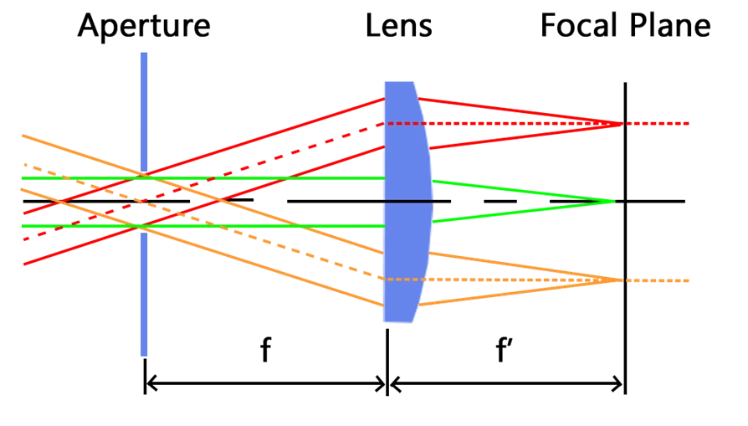
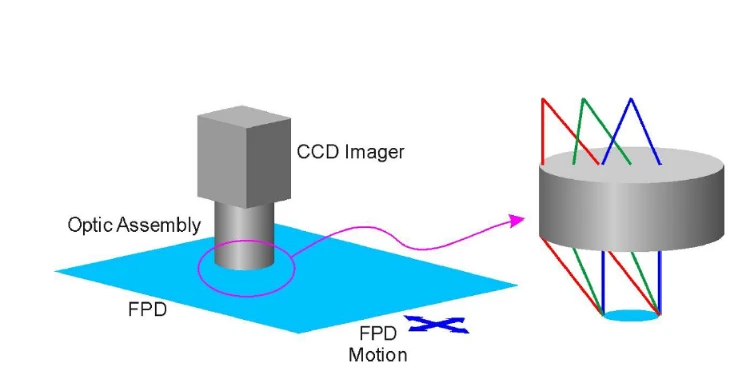
วิธีฟูริเยร์ออพติกส์ได้รับความนิยมในอุตสาหกรรมการแสดงผล สามารถระบุลักษณะมุมมองของอุปกรณ์แสดงผลได้อย่างสมบูรณ์ด้วยการรับเซ็นเซอร์ CCD เพียงครั้งเดียวในเวลาเพียงไม่กี่นาที นอกจากนี้ยังมีราคาไม่แพงกว่าเมื่อเปรียบเทียบกับระบบโกนิโอเมตริกแบบอัตโนมัติเต็มรูปแบบ
โคนิก้า มินอลต้า นำเสนอโซลูชันการวัดผลแบบในหลายรูปแบบคือ
Radiant Vision System พร้อมด้วยเลนส์ FPD Conoscope series 2 ช่วยให้สามารถประเมินประสิทธิภาพของมุมมองภาพได้อย่างครอบคลุมด้วยการวัดแสงเชิงมุมที่มีความละเอียดสูงที่ปล่อยออกมาจากจอแบน (เช่นOLEDและ LCD) และส่วนประกอบการแสดงผล (เช่น หน่วยแบ็คไลท์) เลนส์ FPD Conoscope เหมาะอย่างยิ่งสำหรับทั้งการควบคุมคุณภาพการผลิตในสายการผลิตและโครงการ R&D ให้การวัดที่รวดเร็วและแม่นยำโดยการเก็บข้อมูลมุมมองแบบเต็มกรวยในการวัดครั้งเดียวถึง ±70 องศา (ด้วยความละเอียดเชิงมุม 0.05 องศาต่อพิกเซลเซ็นเซอร์) ช่วงเชิงมุมนี้ช่วยให้ผู้ผลิตประเมินการแสดงผลในขอบเขตทั่วไปของตำแหน่งการดูของผู้ใช้
การวัดจากระบบเลนส์ Radiant Conoscope จะถูกมองเห็นโดยใช้แผนภาพสองประเภทดังที่แสดงด้านล่าง:
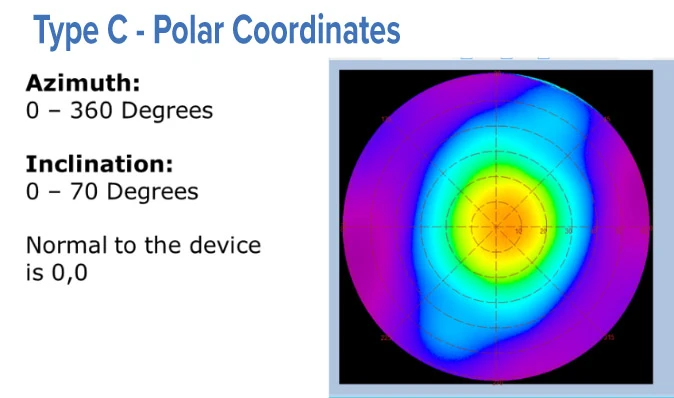
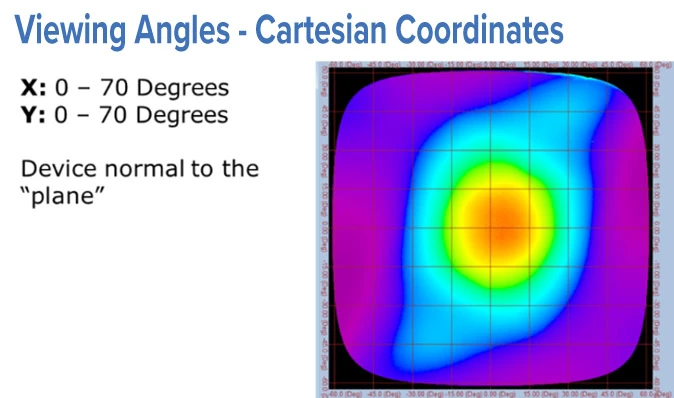
โปรไฟล์อัตราส่วนคอนทราสต์แสงเชิงมุมคำนวณโดยการรวมแผนผังมุมมองสำหรับระดับสูงสุด (สถานะสีขาว) และระดับสีเทาขั้นต่ำ (สถานะสีดำ)
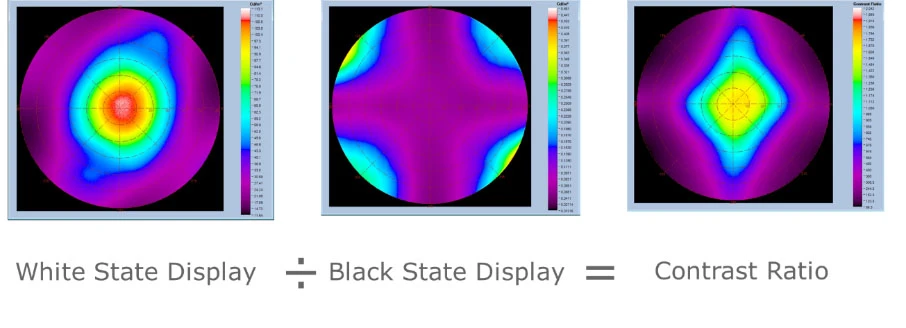
ข้อได้เปรียบที่สำคัญของการใช้โซลูชันของ Radiant คือความคล่องตัวในการเปลี่ยนเลนส์คอนโคสโคปสำหรับเลนส์อื่นๆ เพื่อใช้โฟโตมิเตอร์หรือคัลเลอริมิเตอร์สำหรับความสม่ำเสมอของแสงและสีโดยละเอียดอื่นๆ และการตรวจสอบข้อบกพร่องระดับพิกเซล
หากต้องการข้อมูลเพิ่มเติมเกี่ยวกับเลนส์ Conoscope ของ Radiant FPD คุณสามารถดาวน์โหลดข้อมูลจำเพาะหรือดูข้อมูลจากการสัมมนาผ่านเว็บ ที่จะช่วยจัดการกับปัญหาในมุมมองที่ซับซ้อน (เช่น ความสม่ำเสมอของสี OLED และข้อบกพร่องในจอแสดงผลแบบฝัง) และแสดงให้เห็นถึงความสามารถรอบด้านของโซลูชันของ Radiant ที่สามารถบูรณาการเข้ากับห้องปฏิบัติการ R&D และสายการผลิตด้วยการตั้งค่าและการกำหนดค่าเพียงเล็กน้อย
หากต้องการความช่วยเหลือในการทดสอบจอแสดงผล สามารถติดต่อถึงผู้เชี่ยวชาญด้านแอปพลิเคชันของเราและให้เราช่วยเหลือคุณ

